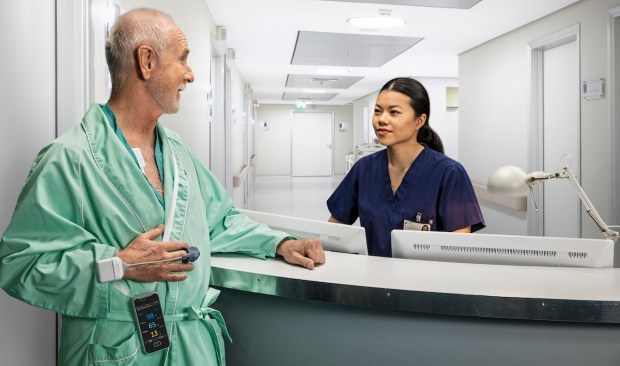Consumers Embrace Connected Devices for Always-on Health Benefits

The dynamic between behavioral expectations and technical capabilities increasingly finds its sweet spot in healthcare.
In an era marked by unprecedented and hyper-rapid technological advancements, the way individuals approach and monitor their health and well-being has transformed.
Industry giants GE HealthCare and Apple are both leaning into the growing trend of continuous health monitoring.
Apple’s 10th anniversary Apple Watch wearable, set to debut commercially in 2024 or 2025, will include a way for users to monitor blood pressure, CNBC reported, while GE HealthCare received Food and Drug Administration (FDA) clearance Monday (Aug. 14) for its Portrait Mobile wireless and wearable monitoring solution, which frees patients from their hospital beds while providing continuous monitoring of vital signs using wearable sensors with a wireless protocol.
And it couldn’t be happening at a more opportune time from a behavioral and user comfortability perspective, PYMNTS research in the second-quarter edition of the “How the World Does Digital” found. The way consumers view their health has never been hands-off, but now it is increasingly — and literally — more hands-on, and digital, than ever before.
More connected health monitoring solutions have the potential to lead to faster treatment, in turn producing better and more repeatable outcomes while helping to foster a proactive and informed approach to health and wellness.
Read also: Healthcare Industry Could Be Generative AI’s Biggest Proving Ground
Tracking Health in Real Time
From health-tracking apps to telemedicine platforms and more clinical solutions, the digital landscape is revolutionizing how people engage with their well-being.
“How The World Does Digital” found that throughout the last year alone, the share of consumers engaging in daily digital activities climbed 6.5%, with every single age and income group increasing their digital engagement.
While the data more broadly underscores the increasingly vital role digital channels play in consumers’ everyday routines, it also revealed a significant rise in consumers’ use of digital tools to access their health data on both a daily basis (26%) and a weekly level (11%).
The survey of over 11 bellwether countries also found that digital engagement in one activity boosted participation in others, particularly those with similar digital characteristics. These positive network effects climbed 4.4% between the first quarter of 2022 and Q1 2023 and showed that consumers who shop online more also managed more of their healthcare needs online (a 7% bump).
Digital solutions have emerged as powerful tools that enable consumers to stay connected to their health, and one of the most significant contributions they provide is the ability to track various health metrics in real time.
Wearable devices like fitness trackers and smartwatches have become ubiquitous, offering users insights into their physical activity, heart rate, sleep patterns and stress levels. These devices provide a continuous stream of data, allowing individuals to monitor their progress, set goals, make informed decisions about their lifestyle and contact a specialist when a higher touch or more clinical approach is necessary.
“How The World Does Digital” found that 63% of consumers using wearable technology to track their health also used connected devices for home monitoring, highlighting the positive network effect that living a digitally connected life brings.
See also: Can Always-on AI Give Healthcare Providers a Helping Hand?
Personalized Health Insights
The marriage of data analytics and digital health solutions has given rise to personalized health insights, and consumers are increasingly buying into these new and attractive capabilities.
AI-powered algorithms analyze users’ health data to generate tailored recommendations. For instance, these algorithms can predict potential health risks based on a person’s lifestyle, genetics and medical history. This empowers individuals to take proactive steps to prevent or manage conditions before they escalate.
The trajectory of digital solutions in the realm of personal health is promising. As technology continues to evolve, even more sophisticated AI-driven insights, greater integration between wearable devices and medical systems, and improved user interfaces for seamless interactions will be brought to market and commercialized, with platforms and products meeting consumers where they are with connected health solutions rather than making consumers come to them.
Still, it is important to note that not everyone has access to smartphones, reliable internet, or the technical know-how to navigate these platforms — or the disposable income to outfit themselves with a connected wearable device. Addressing this gap in digital access is crucial to ensure that everyone can benefit from digital health solutions.
